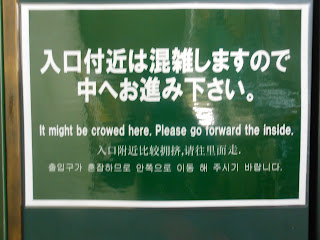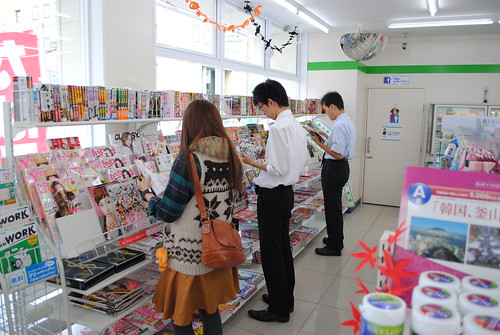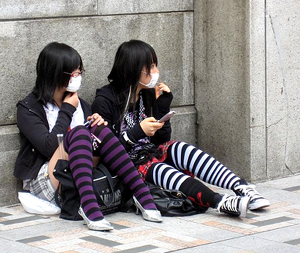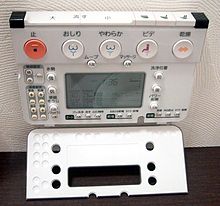I need to get my wisdom teeth taken out. Unfortunately, this is no longer an option for me, but more of a necessity. My straight teeth are slowly becoming less straight as my back molars grow in, and this is starting to bother me.
I know, I know, it’s not what you look like on the outside that matters, but who you are on the inside. Seriously, though, screw that. I want straight teeth.
So with that in mind, when I heard that one of my ALT friends had gotten all four of her teeth taken out in Japan for ONLY $100 DOLLARS, I knew that I would get it done here. It was now or never.
ANYWAY.
I had my first appointment a few weeks ago. I got my supervisor to call and get me an appointment. She spouted out a bunch of words that I didn’t understand, and let me know that I had an appointment with Dr. Saito on at Omni Dentix on Friday, February 3rd.
I don’t particularly like going to the dentist, or any medical professional for that matter, so when that Friday rolled around and Jessica drove me in for my appointment, I begged and pleaded with her to stick around until I was done.
“Stop being a little baby about it,” she said. “I’m going shopping, act like a grown up.”
She didn’t really say that, but I’m sure she would have if she wasn’t so ridiculously nice. Instead, I put on my big girl face all by myself, and told her to have fun shopping. I’d call her when I was done.
I sat down in the waiting room, filled out the forms, and waited for them to call my name. When I was finally called, I was brought into an impeccably clean, stylish room, with about 8 dental workspaces separated by chic barriers. Seriously, the most posh dentist I’ve ever been to. I was greeted by a dental hygienist who spoke no English, and when I gestured to the chair to ask whether I should sit down, she shook her head, and pointed at a tiny little stool thing.
“That’s a little weird,” I thought. “Oh well.” And I sat down on the tiny little stool. Immediately, she ran towards me, and shook her head, pointing at one of the tiny stools that was in a different dental area. It was occupied not by a human, but by a purse, scarf and jacket.
Oh. Oops.
I sheepishly climbed off the place I was supposed to put my stuff, and did things the right way. Go me.
The doctor then came in, told me I needed an x-ray, and made me take out all 7 of my earrings. One of them just wouldn’t come out, so after about 10 minutes of effort, Dr. Saito just told me that it was fine, and that it shouldn’t make that much of a difference. Great. So I go in, get my teeth x-rayed, and come out relatively unscathed. I go to put my earrings back in, and drop one on the ground. Dr. Saito comes back in and looks really confused when he sees me crawling around, muttering to myself in English with my little dental bib still on.
And we wonder why the Japanese people think foreigners are strange.
I straightened up, gave another sheepish smile (I think I’m getting quite good at it) and sat back down in the dental chair, accepting the fact that my earring was forever lost. He then went into an explanation about wisdom tooth removal, and how the roots of my bottom teeth were dangerously close to the nerve that runs across my jaw, which meant that I could end up numb for days, weeks, or possibly permanently.
“I see,” I said, trying not to openly panic. “And approximately how common is that?”
“Well, it’s happened twice and we’ve been open for over seven years,” he replied. “No need to worry. Also, your roots curve in, so we might have to saw your teeth in two to be able to take them out. And you’re only getting local anaesthetics. But don’t worry, it will be fine.”
He then left while I got my top teeth cleaned. Apparently, according to Japanese insurance policy, they are not allowed to clean all your teeth at once, so they must clean your top teeth during one appointment and your bottom teeth during another. Don’t ask, I don’t know.
Then, I grabbed my card, paid for my appointment (only $17!!) and went to meet Jessica, a new appointment made for extraction 2 weeks later.
I fretted and worried for the next two weeks, but my next appointment came way too soon.I was practically crying as Jessica drove me into Sapporo for my appointment, scared to death that something would go wrong. “BUT YOU ARE GOING TO BE THERE THE WHOLE TIME, RIGHT?” I asked Jessica. “Yes, dear. I’ll be right outside waiting for you.”
Seriously, Jessica, you rock. I can’t sing your praises enough.
Once again, they called my name, and this time led me into the room where it would all go down. The oral surgeon came in, and with surprisingly good English, told me exactly what was going to happen. I admitted that I was a little nervous, and he assured me that it was all going to be okay. I liked this guy already.
He wasted no time, putting some numbing cream on the spot, and leaving for a few minutes while it worked its magic. When it was done, he came back in with a giant scary needle, and quickly assured me that it would be over before I knew it. I opened my mouth, and he shoved the needle into my skin about 2395846 times, making sure the entire area was numb. I was holding my breath the entire time, and halfway through he had to tell me to breathe, because I was too tense for him to put the needle in again. Oops.
After the anaesthesia, he left for a little bit longer so it could become effective, then came back. He mentioned that there was going to be a bit of pressure, but if I felt any pain I should raise my left hand.
And then he put a giant set of pliers in my mouth and yanked out my tooth. I mean, not quite, but almost! He put a lot of pressure on my tooth, and I raised my left arm in pain, then he injected more anaesthesia in, and all of a sudden he was waving my tooth in front of me!
That was it! No having to cut it, no anything!
I was all excited that it didn’t even hurt and ready to have the next three teeth pulled out, when he said “Well, that’s it for today!”
“What? I thought I was going to get them all taken out?”
“No, we only do one at a time! Otherwise, you’d never be able to eat anything!”
“Oh, so I have to come back three more times?”
“Yep!”
Great.
He gave me a piece of gauze to stick in the area and keep there for 30 minutes, and with that, I was done. I paid, picked up my prescription of antibiotics and painkillers and hopped back into the car with Jessica. On the way home, the anaesthesia started to wear off, and man did my mouth hurt. I popped 2 of the heavy-duty painkillers, and my mouth went back to it’s previously painless state.
Pretty sure the painkillers I was given were just like extra strength tylenol, but they did the trick, and I managed to get to sleep immediately when I went home.
The next day, I was feeling fine, so I took the drugs as prescribed and went out to sing karaoke with Jessica and some other friends. We also drove all the way back into the city for a check-up, which Jessica was more than happy to do. Have I mentioned how much she rocks recently? Well, she does.
Anyway, one week later I had my stitches taken out and I made an appointment for my next one. I’m left with just a hole where the tooth used to be and no pain whatsoever!
Here’s hoping that it will be equally easy when I go to get the next 3 taken out!



















































